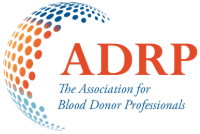Predictive Donor Model to Improve Platelet Supply in Response to a Mass Casualty Event
Background
During a mass casualty or nuclear event, the surge in need for blood may exceed the existing supply. Platelets are of particular interest as a large number of platelets is anticipated to be needed in the case of a nuclear event. Apheresis-derived platelets have traditionally been the primary source for platelet transfusions in the United States (U.S.). In a crisis situation, whole blood-derived platelets can be scaled up to supplement the apheresis platelet supply. At least one blood center has modeled its flex capacity to produce platelets in response to crisis situations using an automated whole blood processing system.
Thank you to TerumoBCT for contributing this resource
June 24, 2025
Related Resources
Engaging blood donors as advocates Social media preferences and associations with marketing
Background: Various critical medical procedures would become impossible without blood donations—saving lives in emergencies, surgeries, and chronic conditions like thalassemia. Therefore, it seems crucial to enhance donor recruitment and ensure…
Rethinking the role of older donors in a sustainable blood supply
INTRODUCTION Many countries, particularly high human development index countries, are facing the challenge of an aging population.1 For Blood Collection Agencies (BCAs) in these countries, an aging population poses two…


